
USA
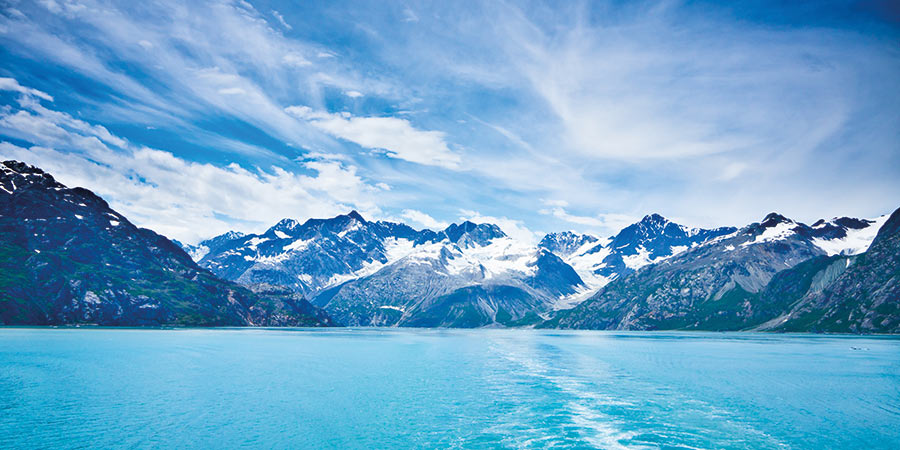
Alaska
By land and sea, experience the massive glaciers, majestic mountains and pristine national parks of America's Last Frontier, Alaska. While you travel, experience popular destinations, such as Juneau, Anchorage, Talkeetna, Fairbanks, Denali National Park and Kenai Fjords National Park, while colorful frontier history come to life. A cruise and land tour is an ideal combo allowing you to uncover even more of Alaska's pristine wilderness and fascinating cities.
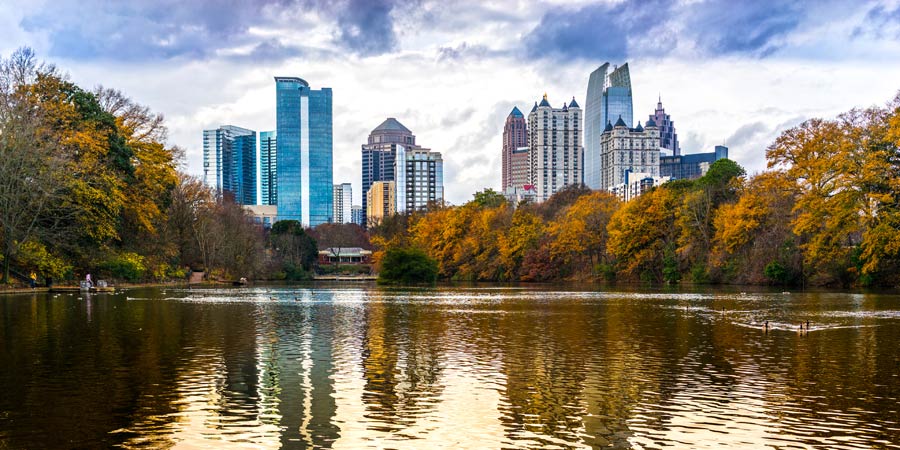
Atlanta
Although Atlanta is the capital of Georgia it was a small place of very little importance until relatively recently. In 1837, it was decided that the Western & Atlantic Railroad would build its terminus in the area. On the opening of the railway the city quickly grew to become a major transportation centre, and continued to expand as a result. During the Civil War Atlanta proved to be the crucial logistics hub, and also became home to the Southern forces' munitions industry. Because of this, the city was burned down by the Union Army in 1864 - an act that was immortalised in the novel 'Gone with the Wind'.

Boston
Boston is not only the capital of Massachusetts and New England's largest city; it is also one of the oldest cities in the United States, boasting a rich cultural heritage and a wealth of historic attractions. The city was founded in September 1630 by English Puritan colonists. It was named after Boston in Lincolnshire, as many in the colony had emigrated from there. Due to the Puritan ethics throughout the community, they quickly established a number of facilities such as America's first public school in 1635, and Harvard College the following year. As well as a centre for learning, the city was also a very successful port. With all of these factors combined, it is perhaps not surprising that Boston was the biggest city in America until 1755.
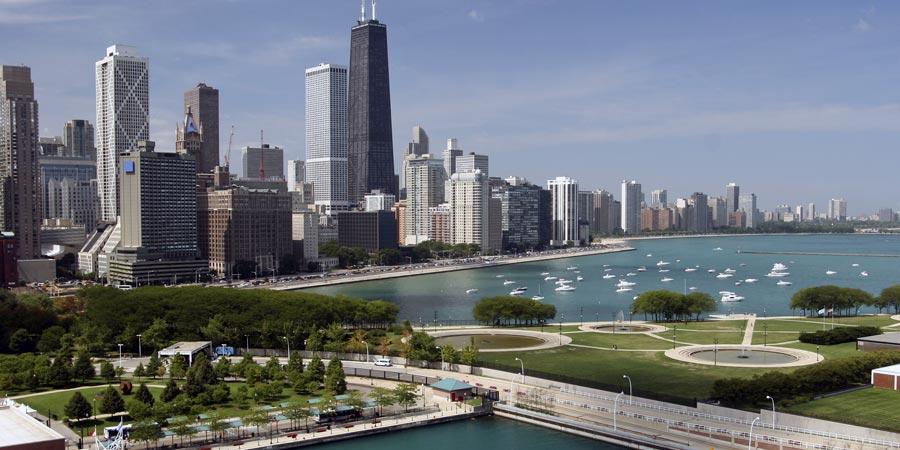
Chicago
Set on the shores of the vast Lake Michigan, the 'Windy City' of Chicago is the capital of the state of Illinois. The area was first settled by Europeans in the early 19th century, though by 1830 it still had a population of just fifty. However, it was able to develop as a centre for trade with the more established East Coast cities; when the railway reached it in 1848, Chicago soon became the largest railway hub in the world. By 1900, the city was home to more than two million people, and it is now the third most populous city in the USA.
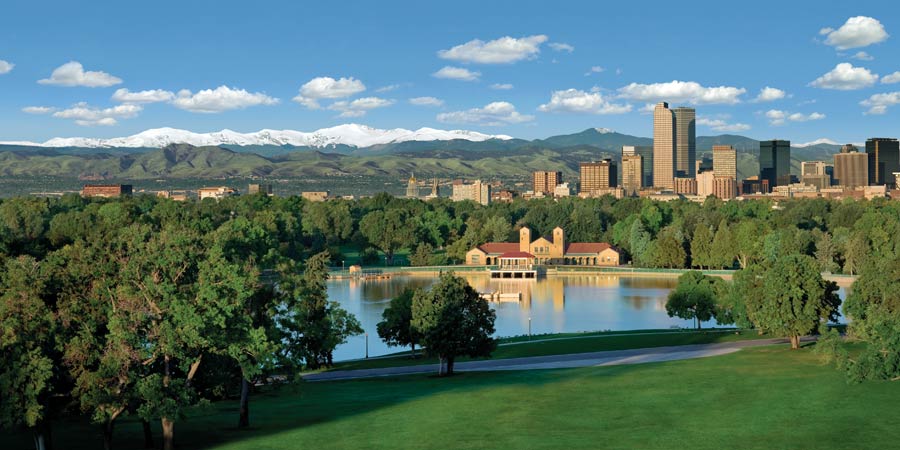
Denver
Denver is the capital and the most populous city of the state of Colorado, nicknamed the 'Mile High City' as it is exactly one mile above sea level. A settlement here initially came into being in 1858, when gold was discovered in the area. Whilst there was actually very little gold to be found, the prospective gold diggers uncovered silver in the mountains. From this time the city prospered, with the population increasing rapidly until the end of the 19th century.
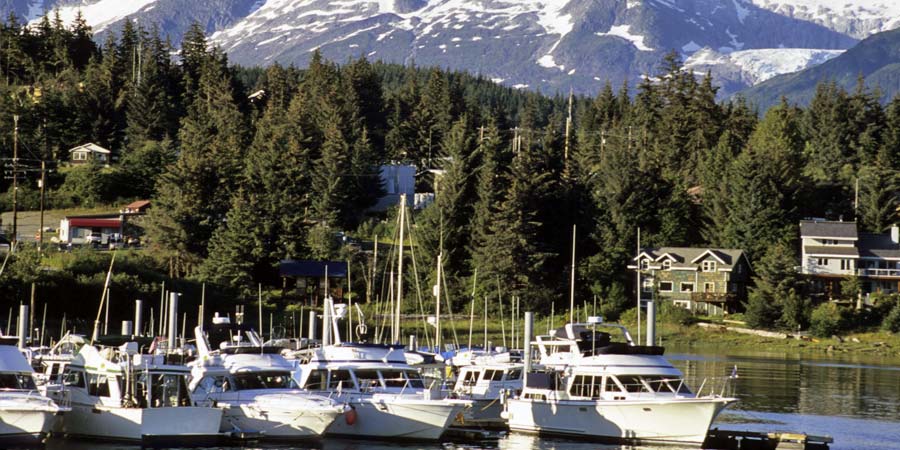
Juneau
Nestled at the base of Mount Juneau, the city of Juneau is Alaska's capital city. It still retains a small-town charm, noted for its friendly locals and beautiful setting. A number of Juneau's attractions are centred on the natural landscape surrounding it, such as the magnificent, easily-accessible Mendenhall Glacier located just thirteen miles from the town centre. This huge glacier can also be seen from a number of roads in the city centre.
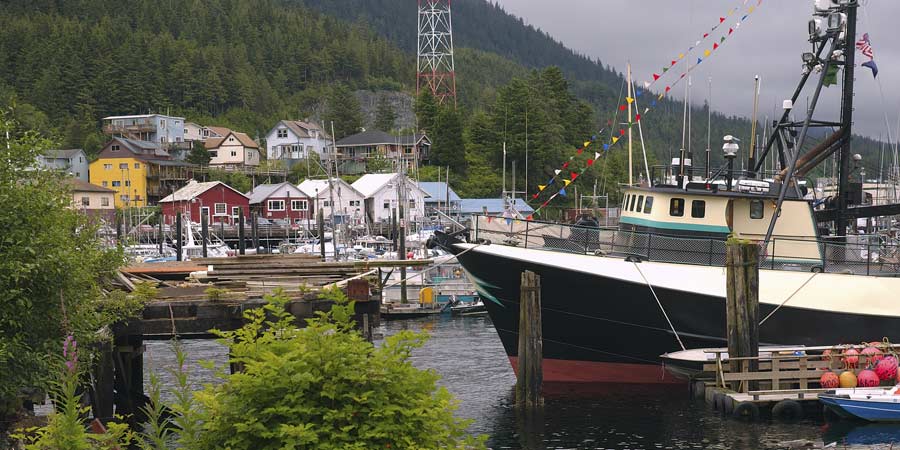
Ketchikan
Ketchikan is the first city on the Inside Passage of south-east Alaska, situated on the island of Revillagigedo. The buildings of the town are set into steep hills, partly propped on wooden pilings, with boardwalks, wooden staircases and totem poles dotted throughout. By 1886, white settlers had opened the first of dozens of canneries in what was soon to be the 'salmon capital of the world'. Forests of cedar, hemlock and spruce, which had provided timber for Tlingit homes and totems, also fed the town's sawmills. The timber and fishing industries have declined, and with the closure of the antiquated pulp mill in 1997, the town is now known more as a beautiful tourist attraction, giving a wonderful insight into Tlingit culture.
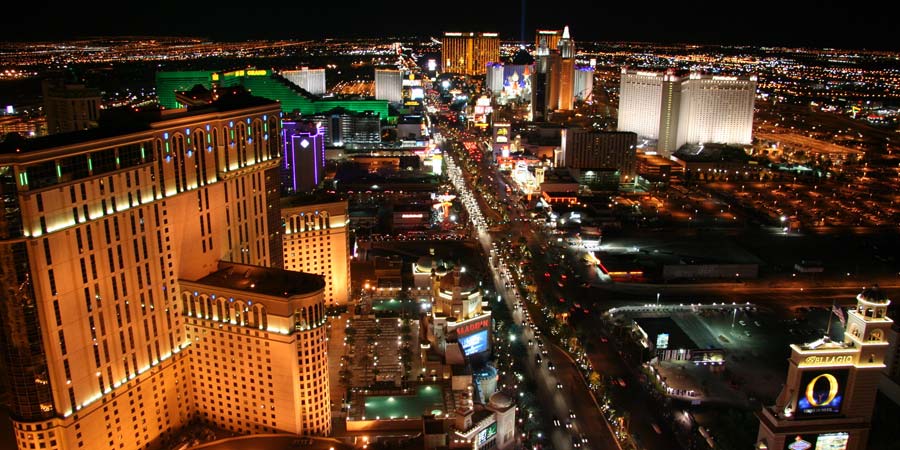
Las Vegas
"Welcome to fabulous Las Vegas, Nevada" reads the famous neon signs that surround the city, and fabulous it certainly is. Las Vegas is probably one of the most spectacular cities in the world, and one that is ever-changing to keep up with the times. An endless drive for novelty means that no two visits to the city are the same. Incredibly, Nevada was the first state to ban gambling, in 1909.
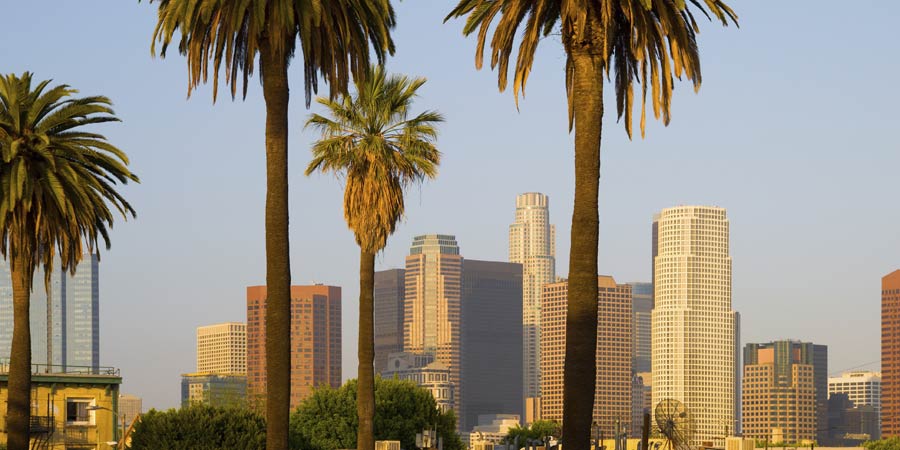
Los Angeles
Hollywood, home of the US movie industry, is all about the glitz and glamour of the Los Angeles dream, with expensive houses spread across an area that is home to the rich and famous.
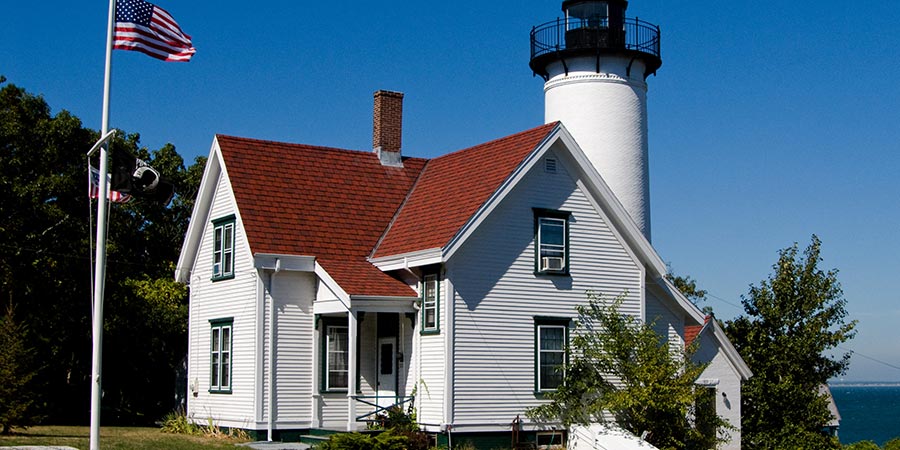
Martha's Vineyard
At twenty miles in length, Martha's Vineyard is the largest offshore island in New England. With its undulating hills and verdant pastures - in addition to its charming shoreline - the island packs an enviable diversity into its diminutive area. The island was inhabited by First Nation Americans during the 16th century, though very little is known from before this time. In 1602 the English explorer Bartholomew Gosnold (who named Falmouth on Cape Cod) sailed here and named it Martha's Vineyard, reportedly after his daughter.
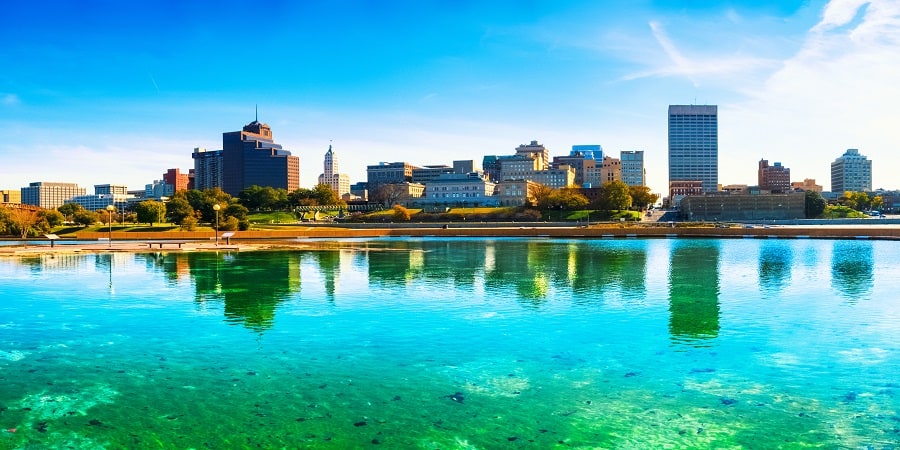
Memphis
Memphis is the second largest city in Tennessee, and was named after the ancient Egyptian capital. Founded in 1819, the city became wealthy as one of America's largest cotton markets. Like much of the South, Memphis was briefly plunged into an economic depression after their defeat in the Civil War and the abolition of slavery. But it quickly rose from these ashes, thanks to its position on the Mississippi River and its location as a rail hub.

Nashville
Nashville was first settled in 1779 as Fort Nashborough and developed quickly. This was due mainly to its prime location and easy accessibility as a river port and, later, as a railway centre. It was little surprise therefore when, in 1843, it became the capital of Tennessee. The city is the main financial hub and insurance centre of the mid-South, but it is easily best known for its musical heritage.
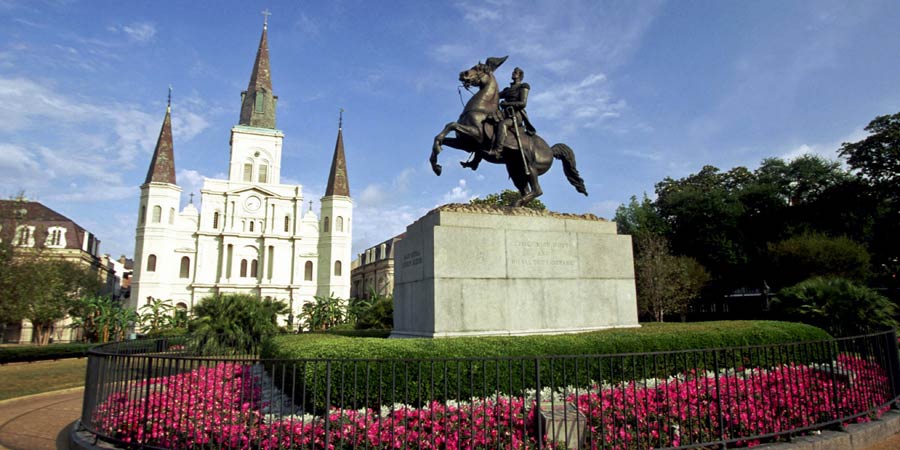
New Orleans
New Orleans, the city known as the 'Big Easy' roars with life, imbued with a spirited atmosphere and sense of playfulness that remains long after the Mardi Gras celebrations draw to a close. Stroll down colourful streets lined with eclectic centuries-old architecture and dotted with dimly lit jazz bars and authentic Creole restaurants. Or, get to the heart of the late 18th-century French Quarter, where a visit to Café du Monde to sample their world-famous beignets comes highly recommended.
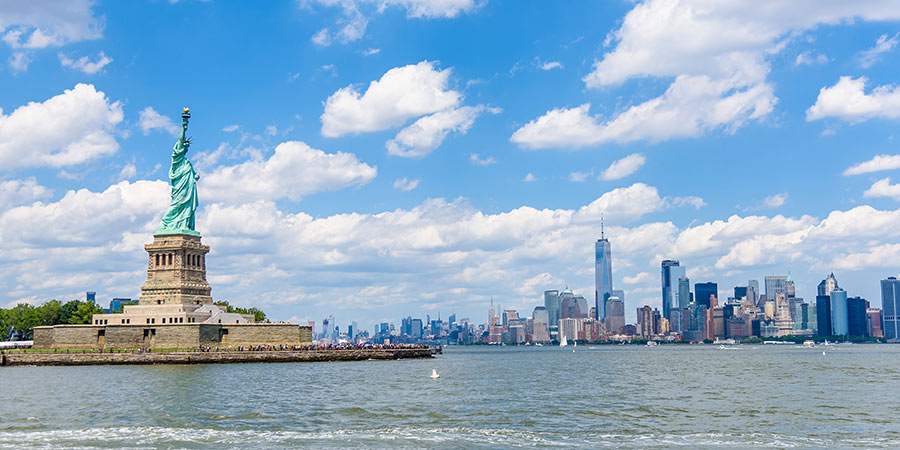
New York
The iconic city of New York is home to more than eight million people, making it the USA's most populous city, and the nation's economic powerhouse. 'The city that never sleeps' is an adrenaline-charged metropolis that holds an immense appeals for almost any visitor; with its global impact on media, art, research, education, entertainment and fashion, it truly offers something for everyone.
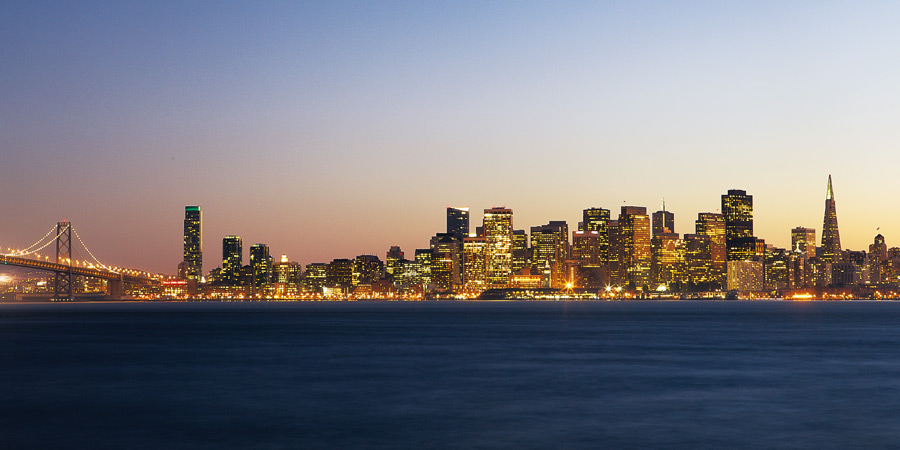
San Francisco
Until the late 18th century the area now known as San Francisco was inhabited by the Ohlone Indians. But they vanished almost immediately when, in 1776, Spanish missionaries began a mission in the region in an effort to introduce Catholicism. They named it for St Francis of Assisi - hence 'San Francisco'. The village passed, along with the rest of California, into the possession of Mexico in 1821, and in 1846 it finally became part of the United States.
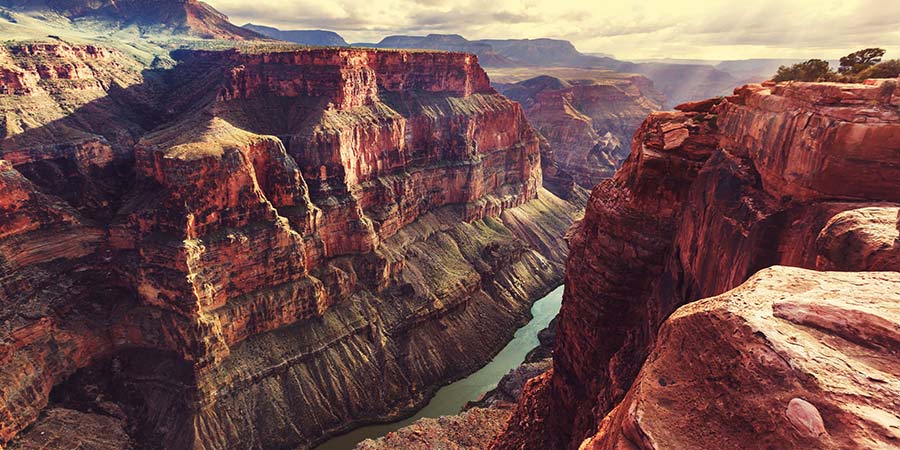
The Grand Canyon
The Grand Canyon, located in Grand Canyon National Park, is an incredible, inconceivable abyss, formed from layer upon layer of different rocks, easily distinguished by colour. Each layer contains clues to the past with its own fossil record. The formation of the canyon has yet to be conclusively determined, with experts unable to agree exactly how it came to exist as it is. The canyon is over a mile deep, ranges from 4 to 18 miles (6 to 30 kilometres) in width and is 277 miles (446 kilometres) long.
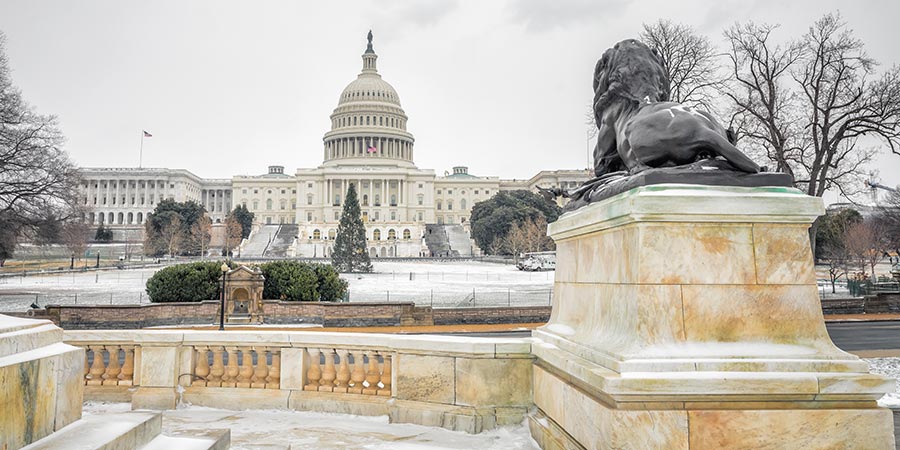
Washington D.C.
Washington D.C. developed on the banks on the Potomac River, its location chosen for strategic purposes, being centrally positioned on the USA's East Coast to satisfy both Northern and Southern interests. The city layout and design was inspired by the city of Paris, a fact that is evident in the grand boulevards and ceremonial spaces that are found throughout the city.
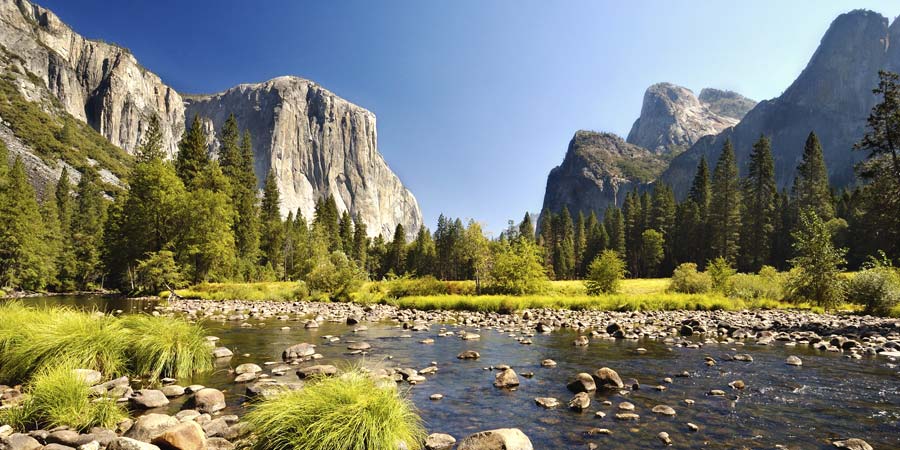
Yosemite National Park
Tourism to the area now known as Yosemite National Park began in the 1860s, after the California Gold Rush had brought more people to the area who then went away and promoted its beauty. To protect the treatment of the area, the government declared it a National Park in October 1890. The park now encloses an incredible 761,268 acres (308,074 hectares) of beautiful rock formations, dramatic waterfalls and lush greenery. It is particularly celebrated for its biological diversity.